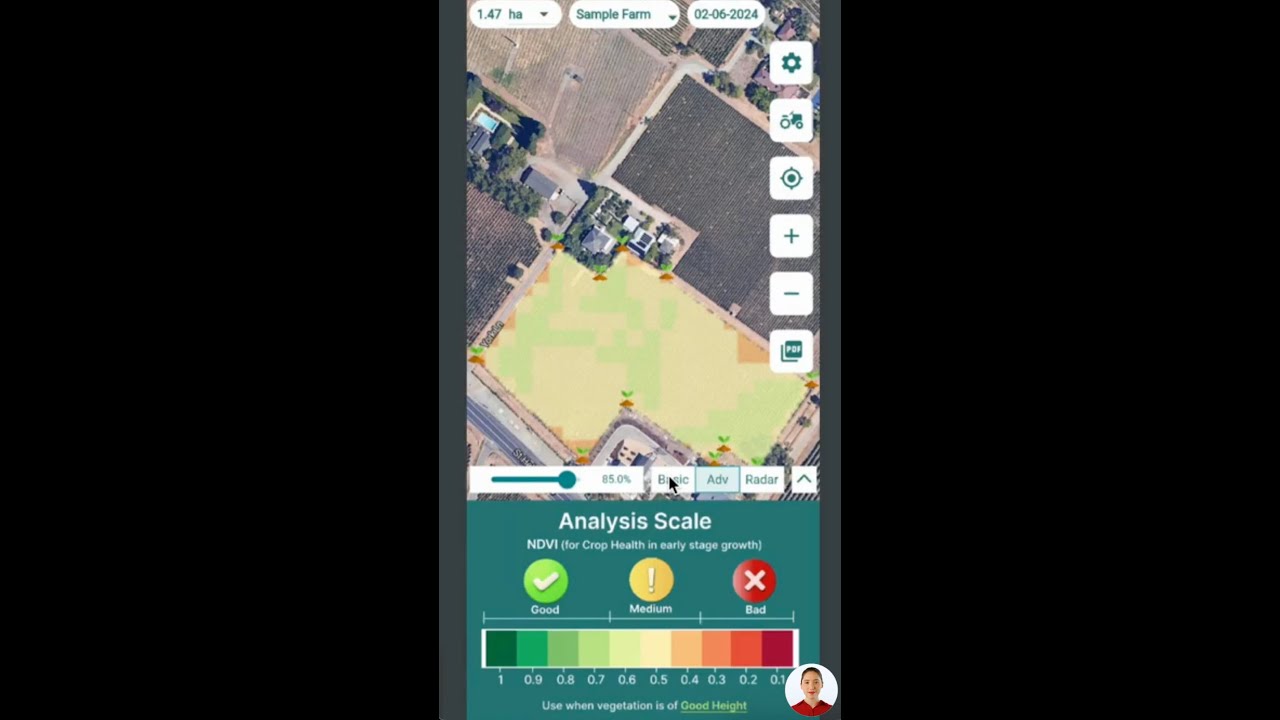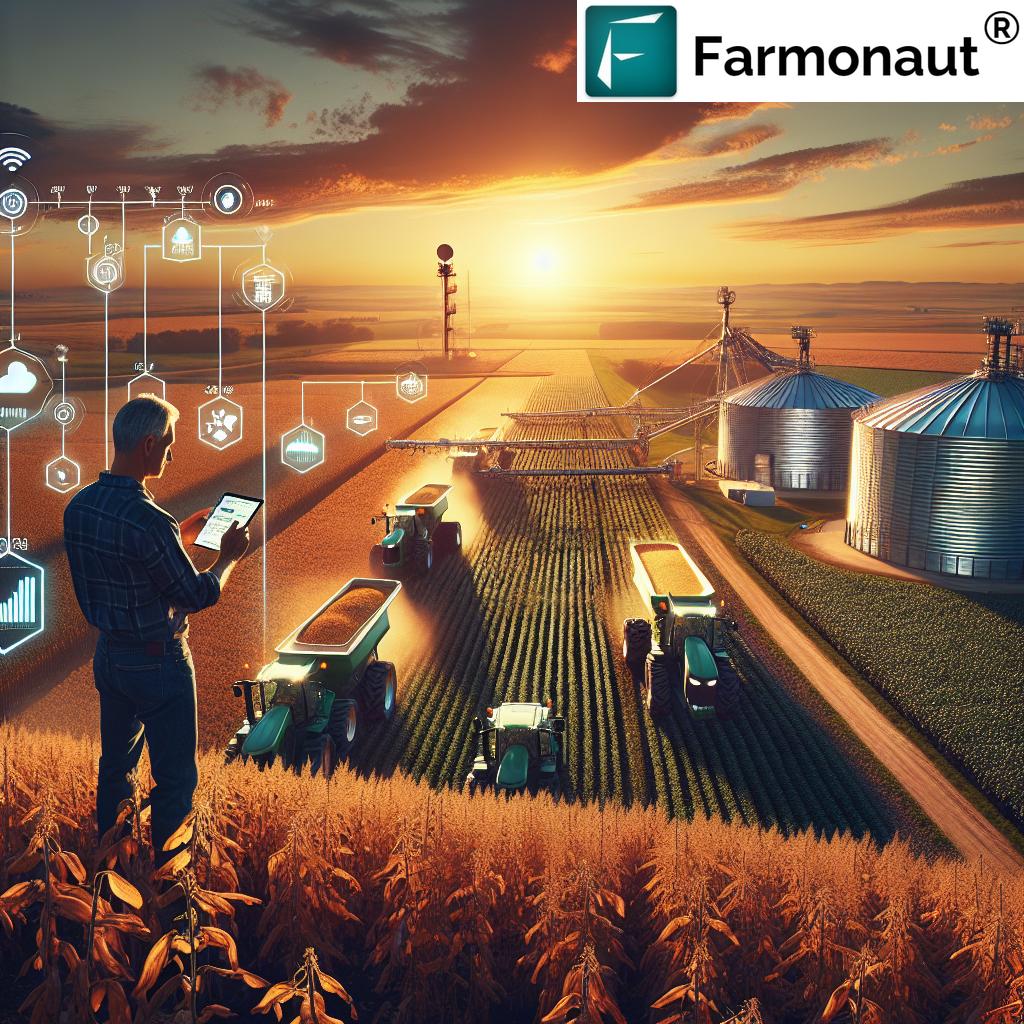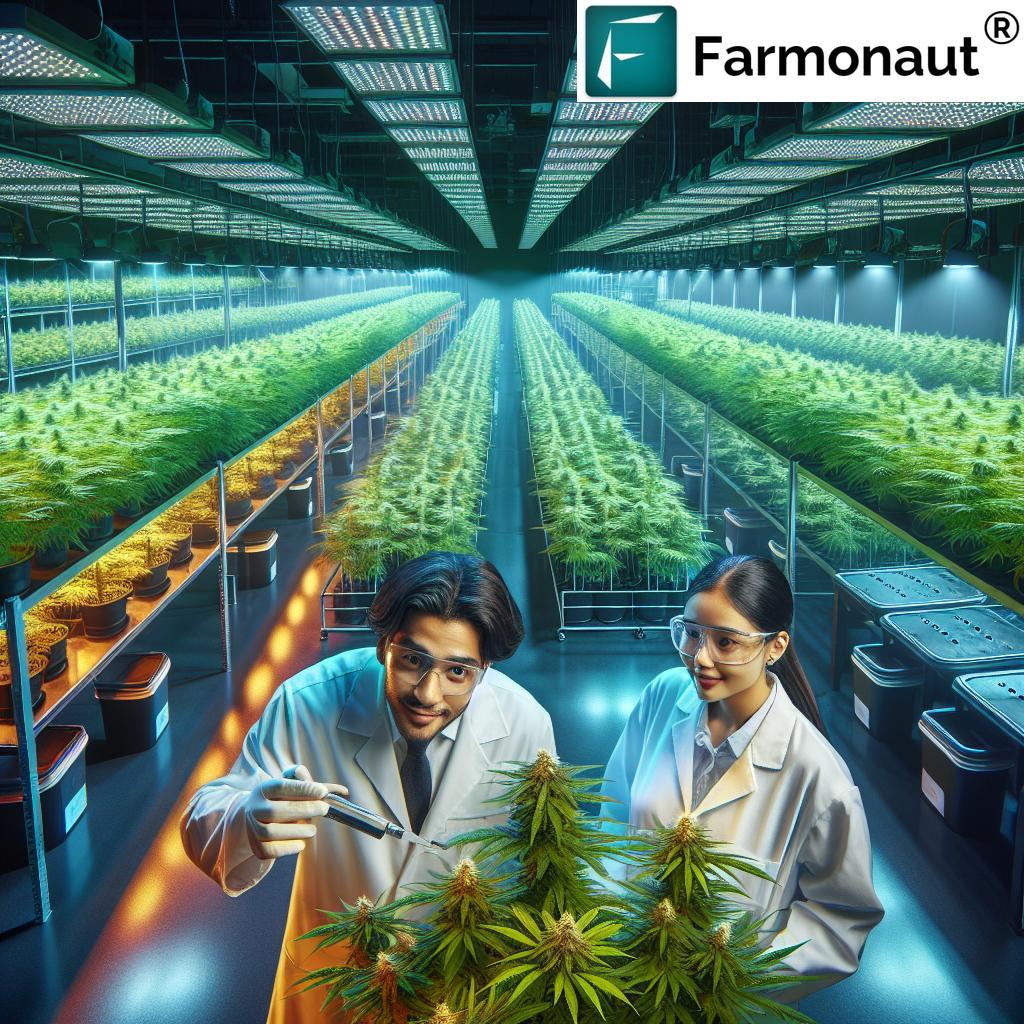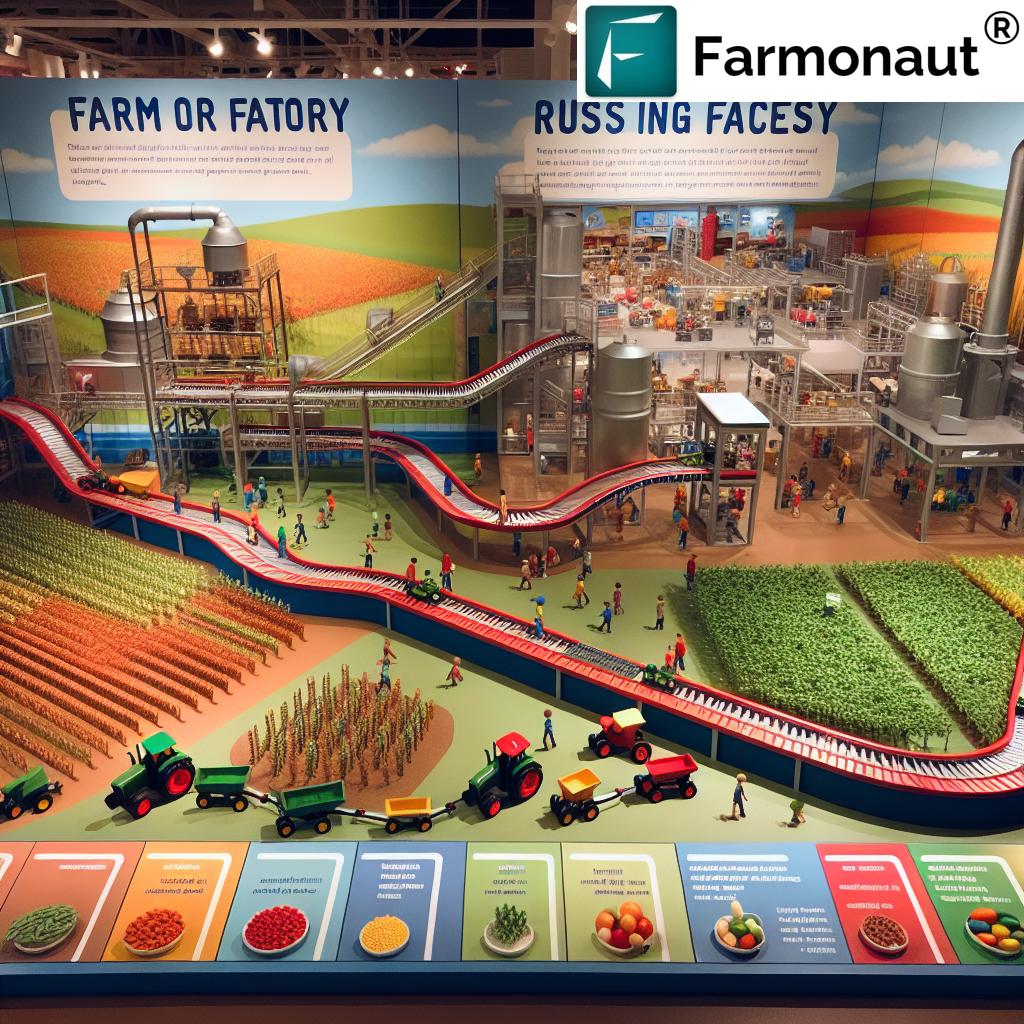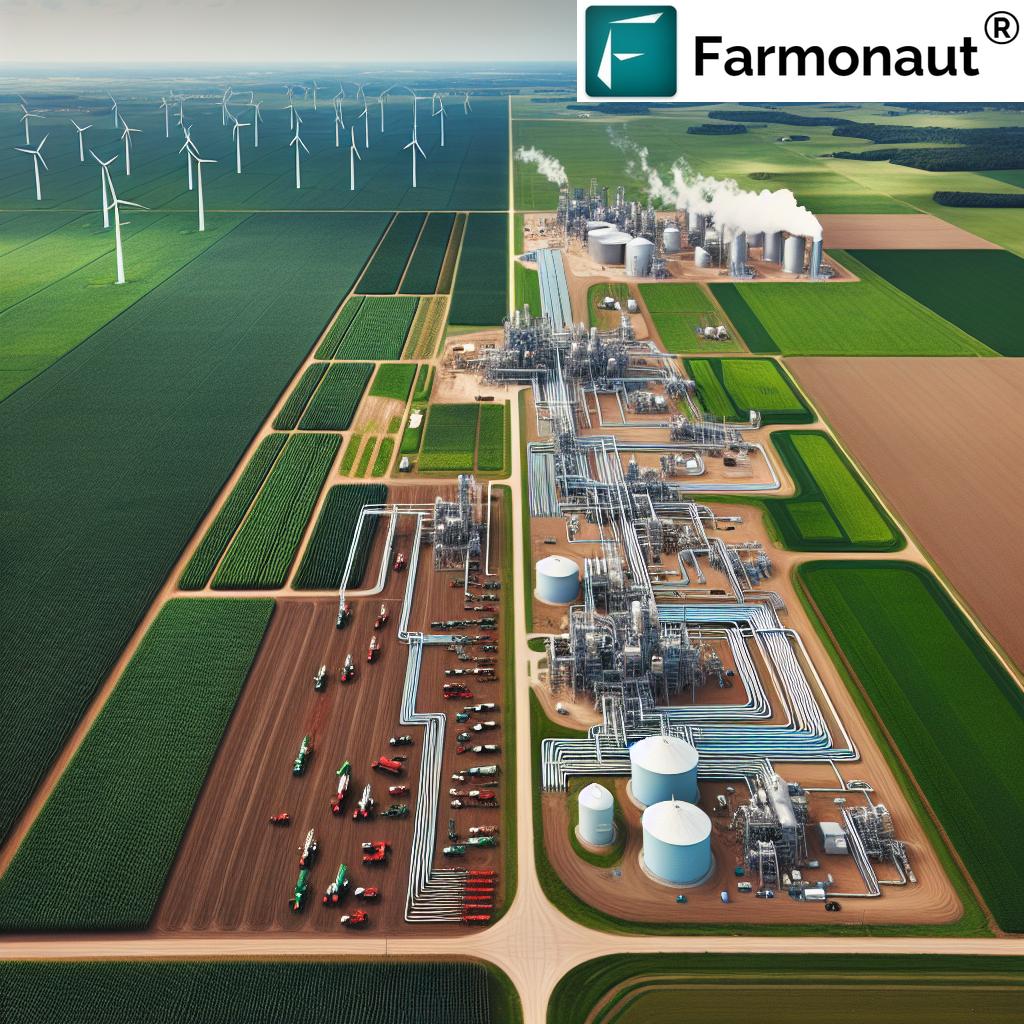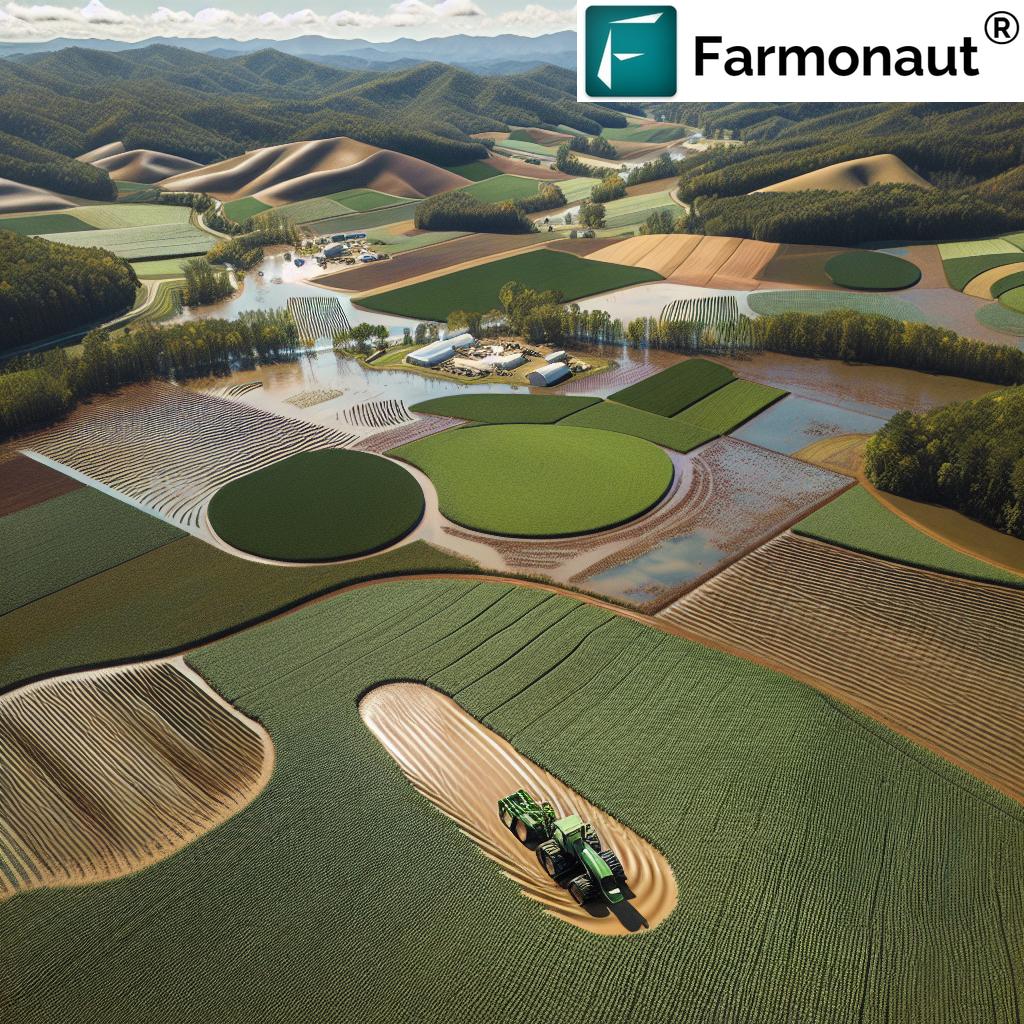Revolutionizing Iowa’s Agriculture: How Organic Farming Boosts Sustainability and Profits in Clear Creek
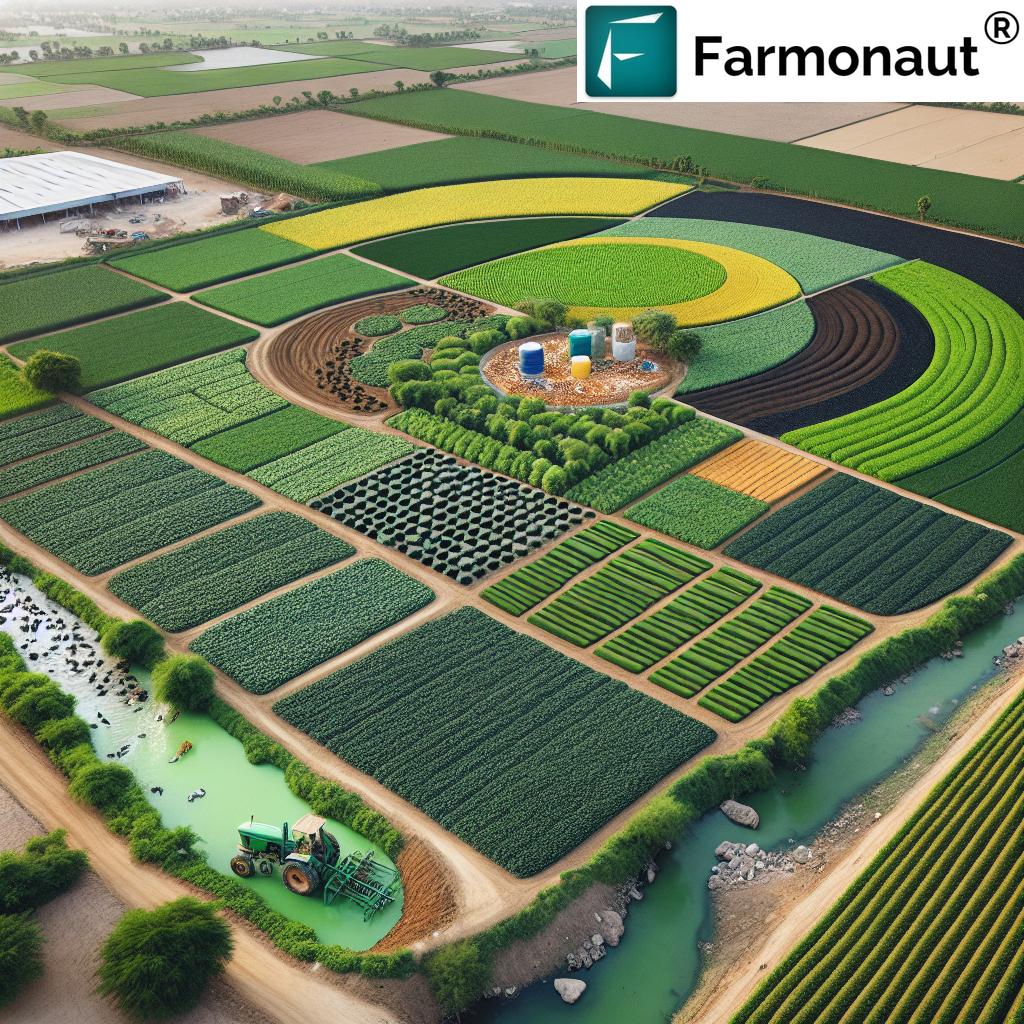
“Iowa leads in organic corn and soybean production, with these crops fetching premium prices up to 50% higher than conventional.”
In the heart of America’s Heartland, a quiet revolution is taking place. Iowa, long known for its vast cornfields and industrial agriculture, is witnessing a significant shift towards organic farming practices. This transformation is not just changing the landscape but also redefining the economics and sustainability of agriculture in the region. At the forefront of this change is Clear Creek, a small town that’s making big waves in the world of organic farming.
As we delve into the story of Clear Creek’s agricultural transformation, we’ll explore how organic farming techniques are not only boosting sustainability but also increasing profits for farmers. This blog post will take you on a journey through the fields of Iowa, showcasing how chemical-free crop production is challenging conventional wisdom and paving the way for a more sustainable future in agriculture.
The Rise of Organic Farming in Clear Creek
Clear Creek, Iowa, has become a beacon of organic farming success, demonstrating that large-scale organic grain farming is not only possible but also profitable. The story begins with the Fehr family, who manage Clear Creek Acres, an impressive organic farming operation spanning approximately 50,000 acres. This vast expanse of land is dedicated to growing a variety of crops including corn, soybeans, and oats, all without the use of synthetic chemicals.
The journey towards organic farming in Clear Creek started in 1998 when Barry Fehr decided to experiment with growing chemical-free soybeans. What began as a small-scale trial has now blossomed into what is considered the largest and most profitable organic grain production area in Iowa, and possibly the entire United States.
Sustainable Agriculture Practices at Clear Creek Acres
- Use of natural fertilizers: Chicken litter and hog manure
- Innovative weed control: Manual weeding and advanced techniques like laser weeders
- Crop rotation to maintain soil health
- Non-GMO seed selection
These practices have allowed Clear Creek Acres to maintain substantial yields while completely eliminating the use of synthetic pesticides and fertilizers. The Fehr family reports only a modest 10% decrease in yield compared to conventional farming methods, a gap that is more than compensated for by the premium prices their organic crops command in the market.
The Economics of Organic Farming in Iowa
One of the most compelling aspects of the Clear Creek organic farming model is its economic viability. While many skeptics argue that organic farming can’t compete with conventional methods in terms of profitability, the numbers tell a different story.
Premium Prices for Organic Crops
Organic crops grown in Clear Creek fetch significantly higher prices in the market compared to their conventionally grown counterparts:
- Organic corn: Approximately $8 per bushel
- Organic soybeans: Around $22 per bushel
These prices represent a substantial premium over conventional crop prices, often more than doubling the revenue per bushel. This price difference is crucial in offsetting the slightly lower yields and potentially higher production costs associated with organic farming.
Reduced Input Costs
While organic farming may require more labor, it significantly reduces expenses related to synthetic chemicals and fertilizers. The use of on-farm resources like chicken litter and hog manure for fertilization not only cuts costs but also creates a more closed-loop, sustainable farming system.
Explore how Farmonaut’s satellite-based farm management solutions can help optimize your organic farming practices. Try our web app now.

Environmental Benefits of Organic Farming in Clear Creek
“Organic farming in Clear Creek, Iowa, has reduced synthetic chemical use by 100%, significantly improving local water quality.”
The shift to organic farming in Clear Creek isn’t just about economics; it’s also driving significant environmental benefits. By eliminating the use of synthetic pesticides and fertilizers, organic farming practices are contributing to improved water quality, enhanced soil health, and increased biodiversity in the region.
Water Quality Improvements
One of the most notable environmental impacts of organic farming in Clear Creek is the improvement in water quality. Conventional farming practices often lead to chemical runoff that can contaminate local water sources. In contrast, organic farming methods significantly reduce this risk:
- Reduced chemical runoff into streams and rivers
- Lower levels of nitrates and phosphates in groundwater
- Improved aquatic ecosystem health
This is particularly crucial for areas like Kossuth and Palo Alto counties, which have historically struggled with high levels of water contamination due to agricultural practices.
Soil Health and Biodiversity
Organic farming practices in Clear Creek are also contributing to improved soil health and increased biodiversity:
- Enhanced soil structure and fertility through natural fertilization methods
- Increased organic matter in soil, leading to better water retention
- Greater diversity of soil microorganisms
- Increased habitat for beneficial insects and wildlife
These improvements in soil health not only benefit the current crops but also ensure long-term sustainability of the land for future generations.
Challenges and Criticisms of the Clear Creek Model
While the success of organic farming in Clear Creek is undeniable, it’s important to acknowledge that this model is not without its challenges and critics. Understanding these concerns is crucial for a balanced view of the organic farming revolution in Iowa.
Local Economic Impact
One criticism of the Clear Creek organic farming model is its impact on the local economy:
- Reduced patronage of local agricultural suppliers and cooperatives
- High rental rates for farmland, potentially pricing out smaller farmers
- Concerns about the concentration of large-scale organic operations
Soil Erosion Concerns
Some critics point out that certain organic farming practices may increase the risk of soil erosion:
- Bare field conditions during certain periods
- Increased tillage for weed control
These concerns highlight the need for continued innovation in organic farming practices to address potential environmental drawbacks.
Discover how Farmonaut’s AI-powered advisory system can help address challenges in organic farming. Download our Android app or get it on iOS.


The Growing Demand for Organic Produce
Despite the challenges, the demand for organic produce continues to grow, driving the expansion of organic farming in Iowa and beyond. This increasing consumer preference for organic foods is a key factor in the economic viability of organic farming operations like Clear Creek Acres.
Market Trends
- Steady increase in consumer demand for organic products
- Growing awareness of health and environmental benefits of organic food
- Expansion of organic sections in mainstream supermarkets
Iowa’s leadership in organic corn and soybean production positions the state to capitalize on this growing market trend. The success of Clear Creek Acres and similar operations demonstrates that large-scale organic farming can meet this demand while maintaining profitability.
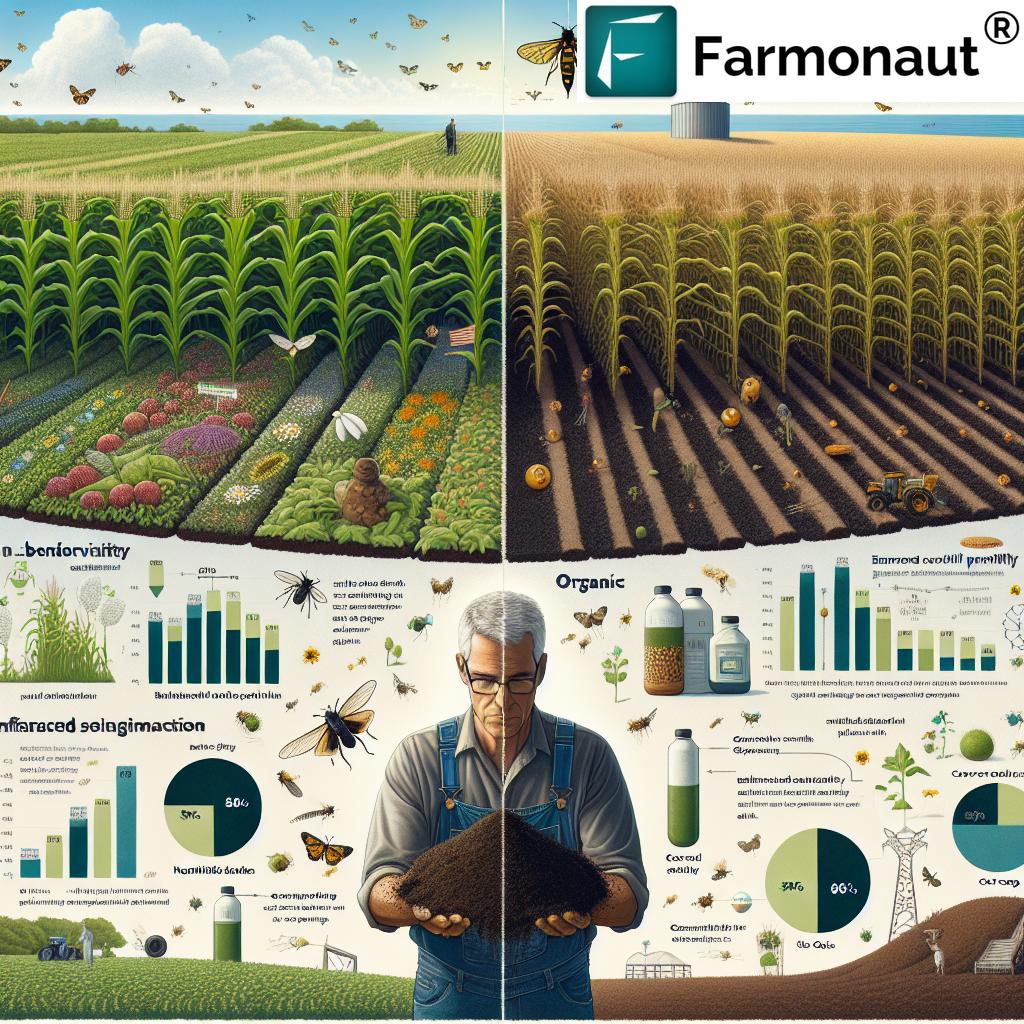
Innovative Techniques in Organic Farming
The success of organic farming in Clear Creek is largely due to the innovative techniques employed by farmers. These methods not only maintain crop yields but also enhance the overall sustainability of the farming operation.
Advanced Weed Control Strategies
Weed management is one of the biggest challenges in organic farming. Clear Creek farmers have developed several innovative approaches:
- Use of laser weeders for precision weed control
- Mechanical cultivation techniques
- Cover cropping to suppress weed growth
Natural Pest Management
Instead of synthetic pesticides, organic farmers in Clear Creek use a variety of natural pest control methods:
- Biological pest control using beneficial insects
- Crop rotation to disrupt pest lifecycles
- Use of natural repellents and barriers
Leverage Farmonaut’s satellite-based crop health monitoring to optimize your organic pest management strategies. Explore our API for integration with your farm management systems.
The Role of Technology in Organic Farming
While organic farming often evokes images of traditional agricultural practices, the reality in Clear Creek is a blend of time-honored techniques and cutting-edge technology. This integration of technology plays a crucial role in making large-scale organic farming both feasible and profitable.
Precision Agriculture in Organic Farming
Organic farmers in Clear Creek are increasingly turning to precision agriculture tools to optimize their operations:
- GPS-guided machinery for precise planting and cultivation
- Drone technology for crop monitoring and assessment
- Advanced weather monitoring systems for improved decision-making
Data-Driven Farming Practices
The use of data analytics is helping organic farmers make more informed decisions:
- Soil health monitoring and analysis
- Yield mapping and prediction
- Resource allocation optimization
Enhance your organic farming practices with Farmonaut’s data-driven insights. Check out our API Developer Docs to integrate our technology into your farm management systems.
Comparative Analysis: Organic vs. Conventional Farming in Iowa
To better understand the impact and potential of organic farming in Iowa, let’s compare it with conventional farming practices. This comparison highlights the key differences and helps illustrate why organic farming is gaining traction in the state.
| Aspect | Organic Farming | Conventional Farming |
|---|---|---|
| Fertilization Methods | Natural (e.g., chicken litter, hog manure) | Synthetic fertilizers |
| Weed Control Strategies | Mechanical, manual, laser weeders | Chemical herbicides |
| Average Crop Yields | Approximately 90% of conventional | 100% (baseline) |
| Market Prices (Corn/Soybeans) | $8/$22 per bushel | $3-4/$8-10 per bushel |
| Environmental Impact on Water Quality | Minimal chemical runoff | Higher risk of chemical contamination |
| Soil Health Indicators | Improved organic matter, biodiversity | Variable, potential for degradation |
| Initial Investment Costs | Higher (transition period) | Lower |
| Long-term Profitability | Potentially higher due to premium prices | Subject to market fluctuations |
| Pesticide Usage | None (synthetic) | Regular application |
| Consumer Demand Trends | Increasing | Stable to declining |
This comparison clearly illustrates the advantages of organic farming in terms of environmental impact and market potential. While conventional farming may have some short-term economic benefits, the long-term sustainability and profitability of organic farming are becoming increasingly apparent.
The Future of Organic Farming in Iowa
As we look to the future, the trajectory of organic farming in Iowa appears promising. The success of operations like Clear Creek Acres is inspiring more farmers to consider transitioning to organic methods. This shift is not just a trend but a response to changing consumer preferences, environmental concerns, and the search for sustainable agricultural practices.
Expanding Organic Acreage
Iowa has seen a significant increase in organic farms:
- Growth from 467 to 799 organic farms between 2011 and 2021
- Continued expansion of organic acreage across the state
- Increasing diversity of organic crops beyond corn and soybeans
Policy Support and Research
The future of organic farming in Iowa is also being shaped by supportive policies and ongoing research:
- State and federal programs to support organic transition
- Increased funding for organic farming research at universities
- Development of organic-specific crop varieties and farming techniques
Conclusion: A Sustainable Path Forward
The organic farming revolution in Clear Creek, Iowa, serves as a powerful example of how sustainable agriculture practices can boost both environmental health and economic prosperity. By embracing innovative organic farming techniques, farmers in this region have not only reduced their reliance on synthetic chemicals but have also tapped into a growing market for organic produce.
The success of Clear Creek Acres and similar operations challenges the long-held belief that large-scale, profitable farming must come at the expense of environmental stewardship. Instead, it demonstrates that with the right approaches, organic farming can be a viable and sustainable model for the future of agriculture.
As we face increasing environmental challenges and a growing global population, the lessons from Clear Creek offer valuable insights for farmers, policymakers, and consumers alike. The shift towards organic farming represents more than just a change in agricultural practices; it’s a step towards a more sustainable and resilient food system.
While challenges remain, the growing demand for organic products and the proven economic viability of organic farming suggest that this trend will continue to gain momentum. As more farmers adopt these practices and as research and technology in this field advance, we can expect to see even greater innovations and successes in organic agriculture.
The story of organic farming in Clear Creek, Iowa, is not just about growing crops without chemicals; it’s about cultivating a sustainable future for agriculture, one that balances profitability with environmental stewardship and community well-being. As we move forward, this model of farming offers a promising path towards a more sustainable and prosperous agricultural sector, not just in Iowa, but potentially across the globe.
FAQs
- Q: How does organic farming in Clear Creek compare to conventional farming in terms of yield?
A: Organic farming in Clear Creek reportedly produces yields about 90% of conventional farming, with the slightly lower yield offset by higher market prices for organic crops. - Q: What are the main benefits of organic farming for water quality?
A: Organic farming significantly reduces chemical runoff into water sources, leading to lower levels of nitrates and phosphates in groundwater and improved overall water quality. - Q: How do organic farmers in Clear Creek manage pests without synthetic pesticides?
A: They use a combination of biological pest control, crop rotation, and natural repellents to manage pests effectively without synthetic chemicals. - Q: What role does technology play in organic farming in Iowa?
A: Technology is crucial, with farmers using precision agriculture tools, GPS-guided machinery, drones for crop monitoring, and data analytics for informed decision-making. - Q: How has the demand for organic produce affected farming in Iowa?
A: Increasing demand has led to a significant growth in organic farms in Iowa, rising from 467 to 799 between 2011 and 2021, and has made organic farming more economically viable.



